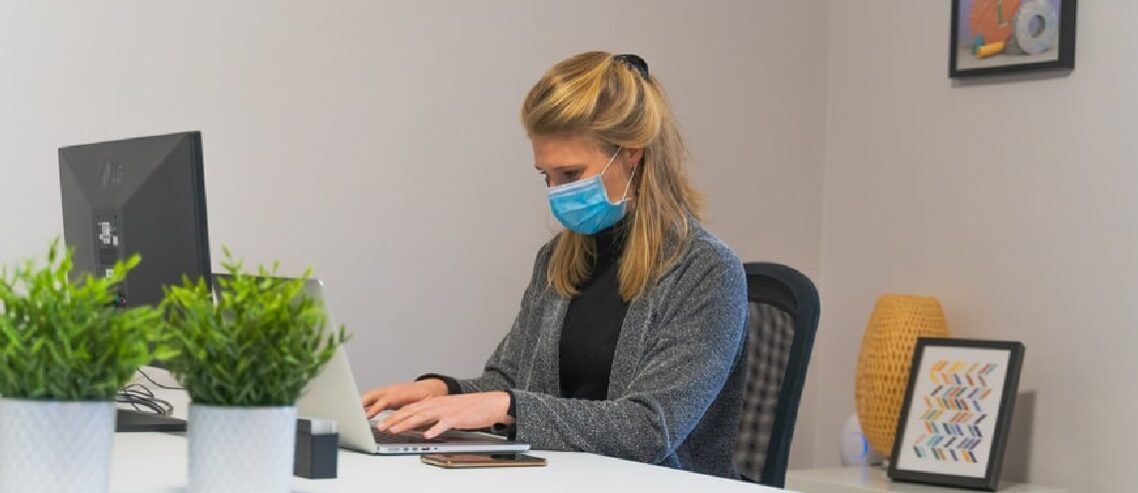4 strategies for a safe return back to the office
As employers across the globe start bringing their employees back to offices after lockdown, they must do what it takes to ensure that a safe and productive workplace is what they return to. Even if you are not looking to bring your workforce back to the office just yet, you will have to do so once things start returning to normal. When that time comes, you’ll need a return-to-work plan that focuses on employee safety and mental health. In this Pacific Prime Latin America article, we discuss four strategies to return to work as safely as possible.
1. Have a plan
Employers must have a plan for bringing their employees back into the office, whether that’s a return-to-office after COVID plan or during. Most employers are concerned about heading back to the office, though some of them might not want to admit it. A detailed plan that presents clear guidelines and prioritizes employees’ safety is a good way to address these concerns. The process should involve multiple stages in order to help employees gradually adjust to being back at the workplace. Some protocols to keep in mind when designing a return-to-work plan include:
- Clocking in and out
- Break room activity
- Office layout (i.e. desk spacing)
- Antibacterial stations
- Hygiene and sanitary precautions
- Maximum amount of people in meeting rooms
- Staggered work schedules for different departments
It’s advisable to reintroduce employees to the office in steps, starting with a partial return where employees or departments alternate days between working in the office and working from home. Many employers who previously thought that remote work was not possible have been proven wrong by the pandemic. Consequently, they should not rush their employees to return to the office and should take precautions by phasing employees back in until government guidelines say otherwise.
2. Prioritize healthy habits
Has your organization taken the appropriate precautions to ensure that it is COVID-safe? Even if such measures are in place, many employees may still be worried about the risk of infection when being in the office and around their coworkers. It’s recommended for managers to inspect and monitor behavior on a daily basis for the first month. After the first 30 days, these inspections can continue on alternate days.
Similarly, only a certain amount of people should be allowed in a meeting or break room at a time. Provide masks, antibacterial wipes, and hand sanitizers as well as regular reminders regarding new safety arrangements. Some ways that management can demonstrate healthy habits include hand sanitizing and disinfecting frequently touched surfaces and objects.
In addition, employees who are not feeling well or are sick should either be sent home or given the option to work from home. Employers are morally obligated to keep their workforce safe, which requires constantly communicating safety measures and making sure everyone follows them.
3. Communicate, communicate, communicate
If there’s one back-to-office after COVID-19 guideline that employers and management must keep in mind, it’s that communication is key. New workplace protocols should be communicated openly and frequently, both written and verbally. Check in with how employees are feeling, remind them of open-door policies, have suggestion boxes (or other means for suggestions) available, and so on.
Let employees know when they will be expected back in the office well in advance, instead of shocking them with the news last minute. This gives them enough time to mentally process and come up with a plan. For example, some employees may have to find childcare options. Above all, employers must be understanding, flexible, and keep an open mind as employees face the challenges of returning to work post-COVID-19.
4. Support employees’ mental health
Returning to the workplace, fears of catching the virus, and childcare demands are just some of the many pressures that can leave employees feeling stressed, anxious, and overwhelmed. It is essential to protect employees’ mental health and safety, not only during work hours but when they are not working as well. Employers can play a huge role in reducing the stigma surrounding mental health in the workplace.
Create a culture where mental health issues, including COVID-related issues, can be out in the open. Provide your workforce with advice from mental health professionals, along with mental health support. It’s also essential for employees to know that they can disclose their mental health issues with their manager or HR in confidence if need be. Some companies offer employees mental health days, such as one day a month that they can use if they need to tend to their mental health. Encouraging the use of vacation days for mental health can also enhance employee wellness.
Last, but certainly not least, a customized employee benefits plan can be key in maintaining and improving workplace satisfaction. Some employee benefits solutions that employees can find beneficial for their mental health include:
- Flexible working times
- Healthy eating programs
- Meditation sessions
- Employee Assistance Programs (EAPs)
Need help creating an employee benefits plan?
As a reputable employee benefits specialist and insurance broker with over 20 years of experience in the industry, Pacific Prime Latin America has the know-how and expertise to ensure you get the help you need. Whether you’re looking for group health insurance, individual health insurance, or corporate insurance solutions, we make it easy for you to secure a plan that is suitable for your needs and budget. Contact us for impartial advice or a free quote or plan comparison today.
You can also read our blog to learn more about healthcare and insurance in Latin America and globally, such as our article on healthcare trends in 2021 that employers should know about.
- A Complete Guide to Dental Treatment in Mexico in 2024 - October 12, 2023
- 15 Best Places To Live in Mexico For Expats in 2024 - October 5, 2023
- Quality of Healthcare in Brazil - September 21, 2023





Comments
Ask a Question
We'll notify you
when our team replies!